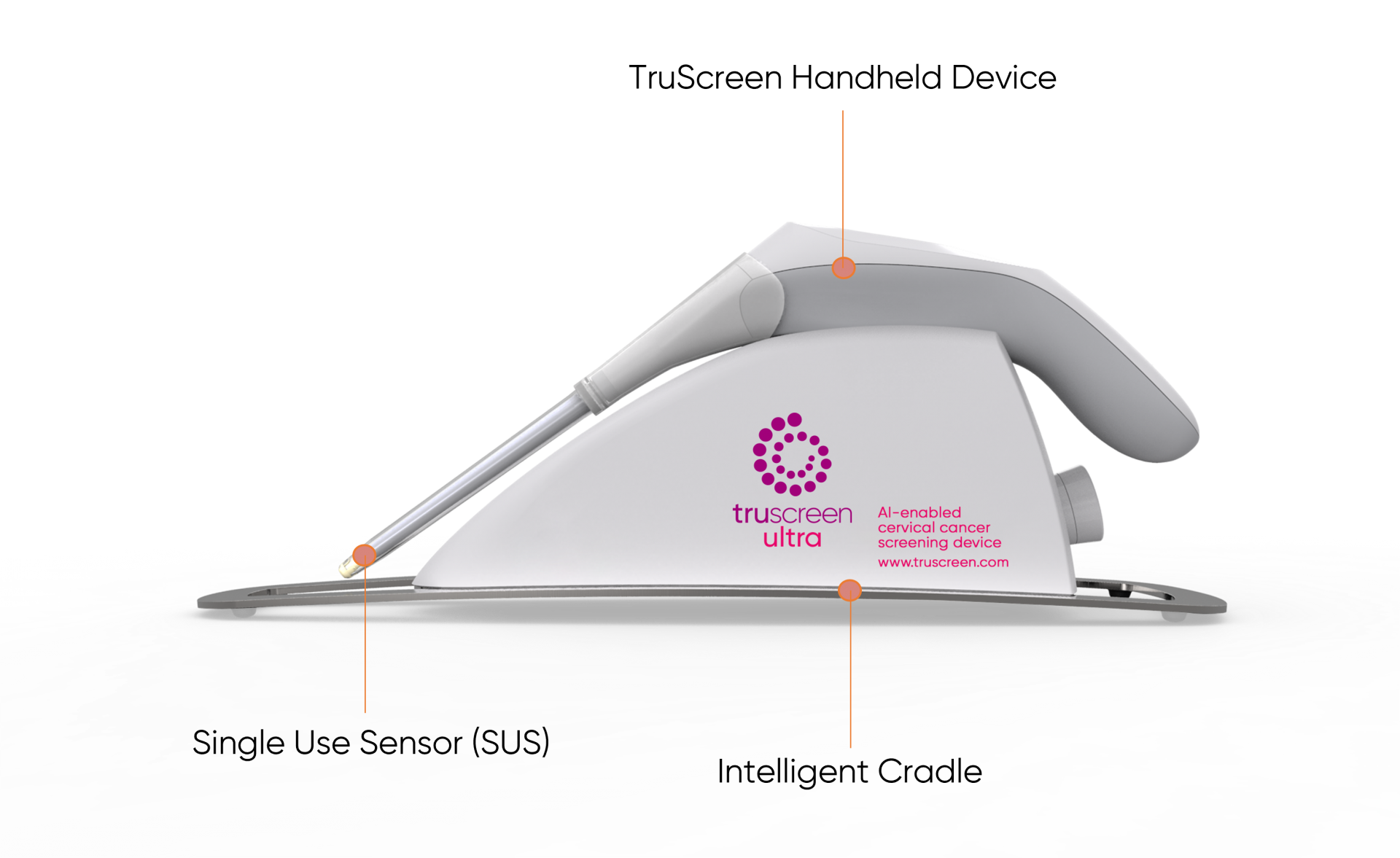
Pioneering research and development on the TruScreen system for real-time cervical tissue differentiation has involved close collaboration with leading clinicians and hospitals across the world.

TruScreen’s development was driven by two leading medical academics from Sydney University, that began in 1986, who sought to establish objective technology that could improve on the conventional Pap smear test. They believed that it should be possible to distinguish between normal and abnormal tissue by measuring changes in physical properties, such as electrical potential. After an extensive and intensive R&D phase, between 1986 and 1999, the first generation TruScreen cervical cancer screening system was developed using the ‘Opto Electrical’ Technology for the detection of pre and cancerous cells on the cervix.
The first generation of Truscreen was commercialised and launched to the market in 2014.
The R&D phase to develop the current second generation device commenced with a series of independent design houses in Feb 2014 and a pilot production version was available for the granting of the CE mark in April 2016. In 2016, the second generation device “TruScreen Ultra” was launched. This built on TruScreen’s world-class medical technology with a number of improvements including significantly increased processing capacity, faster processing, and significantly improved performance. In addition, the handpiece is now wireless and the enhanced device offers wi-fi connectivity, extended battery life, and an LCD touchscreen.
TruScreen holds trade marks and patents that afford the Company certain proprietary protections in respect of its intellectual property rights that it has developed.
Additional research and development is also planned to improve the manufacturing processes to reduce the cost of manufacture of the products to improve gross margins. TruScreen is committed to ongoing product innovation and is consistently conducting research and development projects to ensure the device remains best of breed.
TruScreen's sophisticated algorithm framework
TruScreen’s technology contains a sophisticated algorithm framework that has been developed in collaboration with the Australian Government’s applied research division, CSIRO. The algorithm was researched and developed from data sets collected from the Auckland Hospital, Royal Hospital for Women (Sydney), and The Whittington Hospital (London) between 1998 to 2000.
More than 23 man-years were spent on algorithm development and testing to arrive at the current version of the TruScreen Ultra classifier algorithm. During development, numerous algorithm methodologies were trailed. The current TruScreen Ultra algorithm was selected following trials of 5 competing algorithms.
The TruScreen Ultra algorithm is AI-enabled and uses a trained multidimensional probabilistic tissue features classification engine to provide a binary classification result (Normal or Abnormal) with a high degree of Sensitivity and Specificity. The data sets used to train the algorithm to consist of patient-specific clinical data combining clinical diagnosis information from colposcopy, cytology, and histology. The training data set consists of more than 7,500 multi-probing data sets, from patients of varying ethnicities with differing histological diagnoses.

Clinical performance and studies
The TruScreen device has been extensively testing in numerous clinical trials and evaluations around the world. Over 20,000 women have been screened by TruScreen in these evaluations.*
Clinical PerformanceTruScreen’s current markets
TruScreen’s cervical cancer screening device is certified for use throughout Europe, and NMPA approved for sale in China. It is currently available in multiple markets around the world through our distribution network.
Markets and Distributors